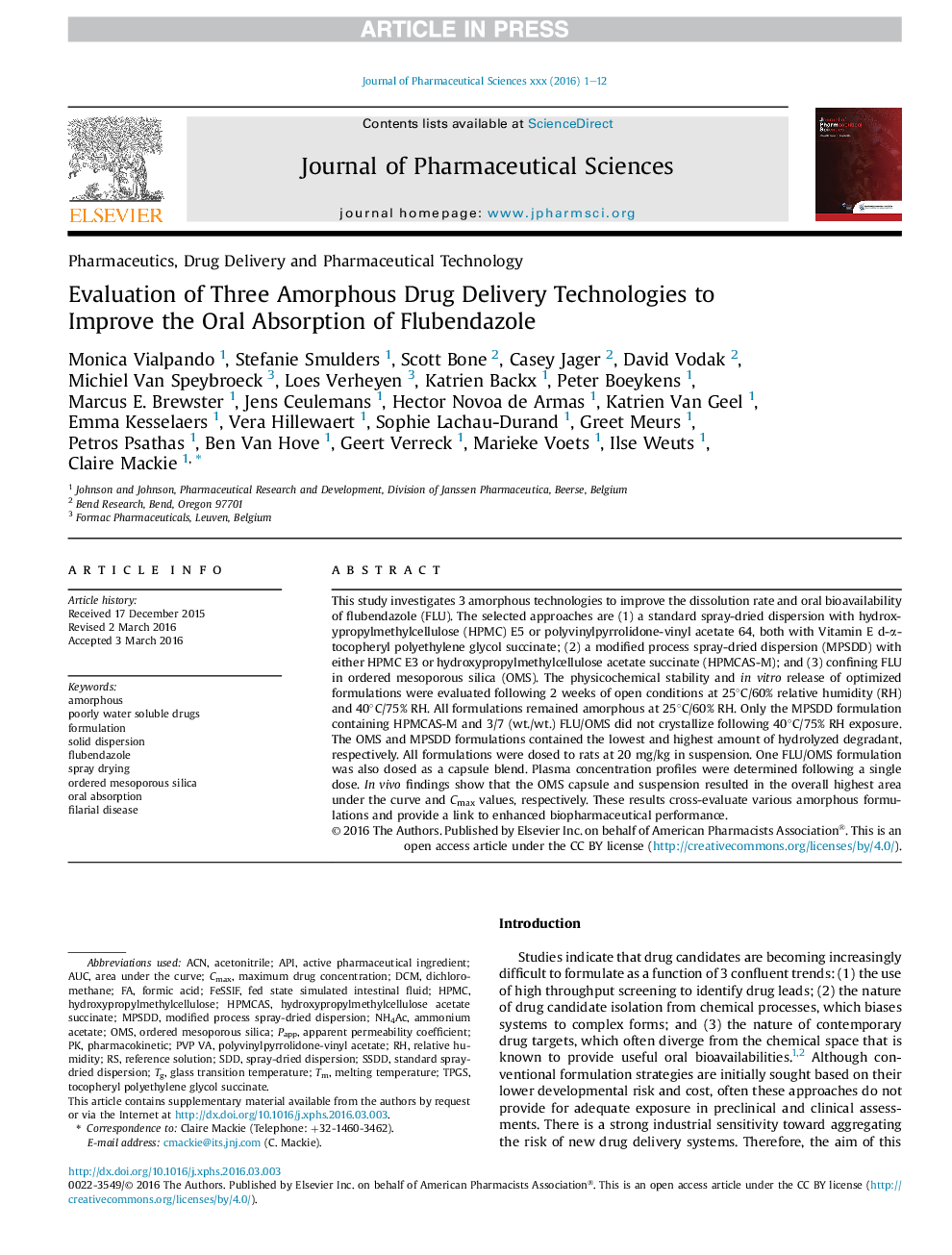| Article ID | Journal | Published Year | Pages | File Type |
|---|---|---|---|---|
| 8514976 | Journal of Pharmaceutical Sciences | 2016 | 12 Pages |
Abstract
This study investigates 3 amorphous technologies to improve the dissolution rate and oral bioavailability of flubendazole (FLU). The selected approaches are (1) a standard spray-dried dispersion with hydroxypropylmethylcellulose (HPMC) E5 or polyvinylpyrrolidone-vinyl acetate 64, both with Vitamin E d-α-tocopheryl polyethylene glycol succinate; (2) a modified process spray-dried dispersion (MPSDD) with either HPMC E3 or hydroxypropylmethylcellulose acetate succinate (HPMCAS-M); and (3) confining FLU in ordered mesoporous silica (OMS). The physicochemical stability and in vitro release of optimized formulations were evaluated following 2 weeks of open conditions at 25°C/60% relative humidity (RH) and 40°C/75% RH. All formulations remained amorphous at 25°C/60% RH. Only the MPSDD formulation containing HPMCAS-M and 3/7 (wt./wt.) FLU/OMS did not crystallize following 40°C/75% RH exposure. The OMS and MPSDD formulations contained the lowest and highest amount of hydrolyzed degradant, respectively. All formulations were dosed to rats at 20 mg/kg in suspension. One FLU/OMS formulation was also dosed as a capsule blend. Plasma concentration profiles were determined following a single dose. In vivo findings show that the OMS capsule and suspension resulted in the overall highest area under the curve and Cmax values, respectively. These results cross-evaluate various amorphous formulations and provide a link to enhanced biopharmaceutical performance.
Keywords
CmaxHPMCHPMCASFeSSIFDCMTPGSACNSDDNH4AcAPIAUCOMSAmorphousAmmonium acetateAcetonitrileFormic acidOral absorptionmaximum drug concentrationSpray dryingPoorly water soluble drugsglass transition temperatureMelting Temperaturefed state simulated Intestinal fluidDichloromethaneRelative humidityOrdered mesoporous silicaapparent permeability coefficientpharmacokineticFormulationFlubendazolearea under the curveActive Pharmaceutical IngredientHydroxypropylmethylcelluloseHydroxypropylmethylcellulose acetate succinatePappSolid dispersion
Related Topics
Health Sciences
Pharmacology, Toxicology and Pharmaceutical Science
Drug Discovery
Authors
Monica Vialpando, Stefanie Smulders, Scott Bone, Casey Jager, David Vodak, Michiel Van Speybroeck, Loes Verheyen, Katrien Backx, Peter Boeykens, Marcus E. Brewster, Jens Ceulemans, Hector Novoa de Armas, Katrien Van Geel, Emma Kesselaers,
